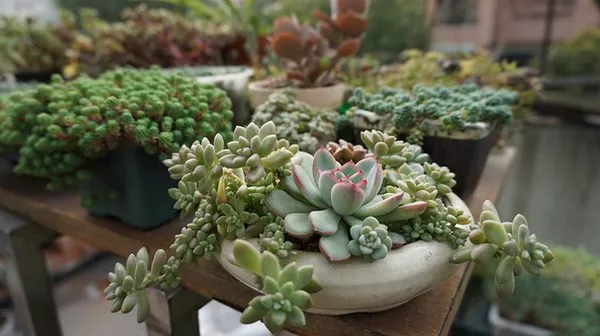Succulents have become increasingly popular in recent years due to their unique appearance, low maintenance requirements, and ability to thrive in various environments. One of the most rewarding aspects of growing succulents is propagating them from cuttings, allowing enthusiasts to expand their collection and share their plants with others. However, successfully replanting succulent cuttings requires careful attention to detail and knowledge of the proper techniques. In this comprehensive guide, we will explore everything you need to know to successfully replant succulent cuttings and ensure their healthy growth.
Understanding Succulent Propagation
Before diving into the replanting process, it’s essential to understand the basics of succulent propagation. Succulents are unique plants that store water in their leaves, stems, or roots, allowing them to survive in arid conditions. They reproduce through various methods, including seeds, offsets, division, and cuttings.
When it comes to propagating succulents from cuttings, the process involves taking a healthy stem or leaf from a mature plant and encouraging it to develop roots and grow into a new plant. This method is particularly popular because it allows for the creation of genetically identical replicas of the parent plant.
Choosing the Right Succulent Cuttings
The first step in successfully replanting succulent cuttings is selecting the right specimens. Look for healthy, mature plants with strong stems and vibrant foliage. Avoid choosing cuttings from plants that show signs of disease, pest infestation, or damage.
When selecting cuttings, it’s essential to choose those that are at least 2-3 inches long and have a clean, straight cut. Make sure to use sharp, sterile scissors or pruning shears to avoid damaging the plant tissue. Additionally, it’s advisable to allow the cuttings to callus over before replanting them, as this helps prevent rotting and promotes successful root development.
Preparing the Cuttings for Replanting
Once you’ve selected your succulent cuttings, it’s time to prepare them for replanting. Begin by allowing the cut ends to dry and callus over for a few days. This step is crucial as it reduces the risk of rot and increases the chances of successful root formation.
After the cuttings have calloused, you can proceed with planting them in suitable growing medium. Choose a well-draining potting mix specifically formulated for succulents or create your own by mixing equal parts of potting soil, perlite, and coarse sand. Fill small pots or trays with the growing medium, leaving enough space for the cuttings to be inserted.
Replanting Succulent Cuttings
When replanting succulent cuttings, it’s essential to handle them with care to avoid damaging the delicate plant tissue. Gently insert the cut end of each cutting into the prepared growing medium, ensuring that it makes good contact with the soil. If you’re planting multiple cuttings in the same container, space them evenly to allow for adequate airflow and prevent overcrowding.
After planting the cuttings, lightly water the soil to settle it around the roots and encourage initial growth. Be careful not to overwater, as succulents are prone to rot if their roots are allowed to sit in soggy soil. Instead, aim to keep the soil lightly moist but not waterlogged.
Caring for Replanted Succulent Cuttings
Once the succulent cuttings have been replanted, proper care is essential to ensure their healthy growth. Here are some tips for caring for newly planted succulent cuttings:
1. Provide Adequate Light: Succulents thrive in bright, indirect light. Place the newly planted cuttings in a location where they will receive plenty of sunlight, such as a sunny windowsill or a spot outdoors with partial shade.
2. Monitor Watering: Avoid overwatering newly planted succulent cuttings, as this can lead to root rot. Instead, water sparingly, allowing the soil to dry out slightly between waterings. Always water the soil directly and avoid getting water on the leaves, as this can cause rot and fungal diseases.
3. Maintain Proper Drainage: Ensure that the pots or containers used for replanting succulent cuttings have adequate drainage holes to prevent water from accumulating at the bottom. Good drainage is crucial for succulents, as it helps prevent root rot and allows excess water to escape.
4. Avoid Disturbing the Cuttings: Once replanted, avoid disturbing the succulent cuttings unnecessarily. Allow them time to establish roots and acclimate to their new environment before handling them or repotting them into larger containers.
5. Watch for Signs of Stress: Keep an eye out for any signs of stress or disease in the newly planted succulent cuttings, such as wilting, yellowing leaves, or pest infestations. Address any issues promptly to prevent them from spreading to other plants.
Conclusion
Replanting succulent cuttings can be a rewarding and enjoyable experience for plant enthusiasts of all levels. By following the steps outlined in this guide and providing proper care, you can successfully propagate new succulent plants and expand your collection with ease. Remember to choose healthy cuttings, prepare them properly, and provide the necessary care to ensure their healthy growth and longevity. With a little patience and attention to detail, you can enjoy watching your succulent cuttings thrive and flourish in their new environment.


